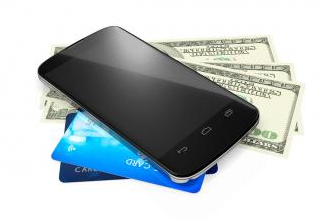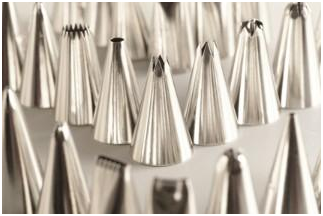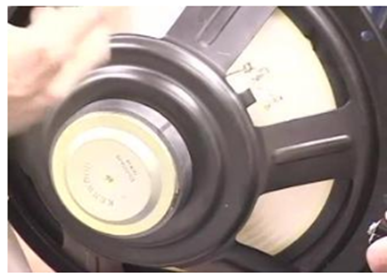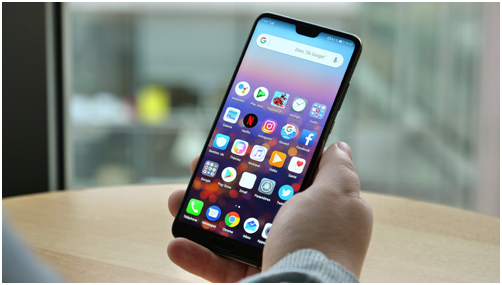A knitting loom is a great tool for making quick and easy projects like hats, scarves, and blankets. Give this simple, double-layer scarf pattern a try, even if it's your first loom project. You can make it with either a round loom or knitting board loom, and you can adjust it to the width and length you desire. Made in the round, your knitting will create a tube that when pressed flat will give you the luxurious warmth of knitted double layers.

Materials
Gather the following materials.
- Small round knitting loom or knitting board
- Worsted or bulky weight yarn, 3 to 4 oz. skein
- Loom hook tool
- Scissors
- Yarn needle
Instructions
The following step-by-step instructions with images can help you make your scarf.
- Prepare your loom. If using a small round loom, you will be using all the pegs. No adjustments are needed. If using a knitting board (as in the photos), you will want to remove unneeded pegs that will get in the way of your knitting. Remove the end peg above the anchor peg. Note: The anchor peg is the horizontal peg on the outside edge of the loom. Leave the pegs to the right of the anchor peg to match your desired scarf width. Remove at least a hand width of the next pegs. Turn the loom around. Mirror the pegs and removed pegs on the other side of the loom
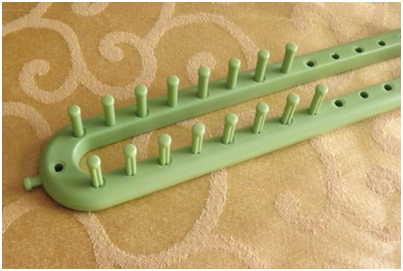
2. Form a slipknot and attach to the anchor peg
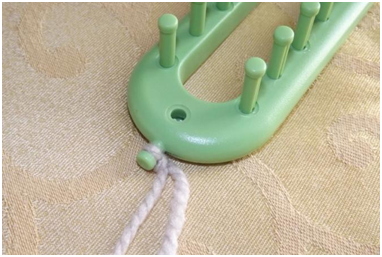
3. Cast on. Working to the right, wrap the yarn around the first peg. The yarn crosses over itself on the inside of the loom, and there is a single wrap of yarn on the outside of the peg. This is an e-wrap. Continue to wrap all the pegs on the round loom or just the ones needed on the knitting board. After all the pegs have been wrapped, wrap another row of e-wraps above the first ones on each peg. Hold the yarn tail. Note: You can also work to the left, if preferred. Whichever direction you choose, be consistent throughout the pattern.
4. Starting with the last peg wrapped and using the loom hook tool, lift the bottom loop over the top loop and over the top of the peg. The peg will have one loop when the stitch is complete. You can now let go of the yarn tail. Continue stitching around the loom, lifting the bottom loop up and over the peg.
5.Repeat the e-wrap around the loom. Hold the yarn and stitch the last peg wrapped. Let go and stitch all the pegs around.
6.Repeat Step 4 until the knitting is approximately 1" long. Undo the slip knot on the anchor peg and feed to the inside of the loom.
7.Repeat Step 4 until the scarf is the length you desire.
8.Finish off. After the last round, cut the yarn tail long for sewing. Thread the tail on a yarn needle. Using the needle lift the loops off of each peg and thread onto the tail. After the scarf has been completely removed from the loom, lay the scarf flat. Sew the end closed. Finish off and weave in the end. Sew the beginning end closed, finish off and weave in the end.
Style It Your Way
Size isn't the only element you can tweak with this scarf. Use this pattern as a base for customizing a variety of scarf styles.
- Knit a striped scarf. Determine the height of your stripes and knit the needed rows for that height. Change colors by simple tying yarn ends together on the inside of the loom. Knit the height of the next stripe as needed. You can weave in the ends on the inside of the scarf if desired, but it is not necessary as the ends will be hidden on the inside of the tube.
- Make a scrappy scarf using a variety of leftover yarn from previous projects.
- Add fringe. Cut two 12" yarn lengths for each fringe. Hold the yarn together and fold it in half. Insert a crochet hook through a stitch on the end of the scarf. Grab the fold of the yarn and pull through to create a loop. Pick up the fringe ends and thread through the loop. Pull the ends to lock the fringe in place. Repeat with additional fringe across both ends of the scarf.
- If you choose to modify the pattern for a single layer scarf, work one direction and then the next for each row. Do not overlap the ends of each row.
The Joy of Loom Knitting
Scarves do not take a lot of time to knit using needles, but they become even quicker projects when knitted up on looms, which are great for people who are not comfortable using needles. Loom knitting is also easier than standard knitting and is a great way to get a child interested in yarn crafts. Loom knitting projects are as close to instant gratification as knitting gets, and they are great gifts to bestow on your family and friends.
Cylinder Shape Knitting Woolen Yarn Bag Kit
Details
Description:
This Cylinder Shape Knitting Woolen Yarn Bag Kit includes 1pc cylinder shape woolen yarn bag, 1pc crochet bag and 1pc knitting accessories storage bag.
The bags are made of canvas film with water resistant and anti-fouling function, more wear-resistant and durable. Zipper design is convenient for daily use. If you are looking for a practical knitting accessories storage bag, this set of bags is a good choice!
Features:
- Set design:
Convenient for storing woolen yarn, crochet and other knitting accessories.
- Water resistant design:
Adopts durable material, stable and practical for daily use.
- Portable design:
With strap design, you can carry the bag easily.
Parameter:
Woolen yarn bag size: 28 x 28 x 32cm
Crochet bag: 18 x 14.5 x 3cm
Notes:
- The woolen yarn, crochet and other objects are not included.
- The size may have slight error due to manual measurement.Package weight: 0.663 kg
Package Size(L x W x H): 41.00 x 33.00 x 5.00 cm / 16.14 x 12.99 x 1.97 inchesPackage Contents: 1 x Cylinder Shape Woolen Yarn Bag, 1 x Crochet Bag, 1 x Knitting Accessories Storage Bag

More Categories :
- Baking Supplies
- Barware
- Kitchen Tools & Gadgets
- Cookware
- Dinnerware
- Drinkware
- Home Decor
- Arts, Crafts & Sewing
- Bathroom Products
- Garden Supplies
- Pet Supplies
- Home Storage & Organization
- Smoking Accessories
- Rain Gear
- Smart Home
- Other Home & Garden Products
- Home Textiles
- Festive & Party Supplies
- House Cleaning
- Pest Control
- Home Improvement
- Furniture
- Home Appliances
View More ( http://www.cutebuy.com)
shop now :https://www.cutebuy.com/cylinder-shape-knitting-woolen-yarn-bag-kitviola-purple.html




